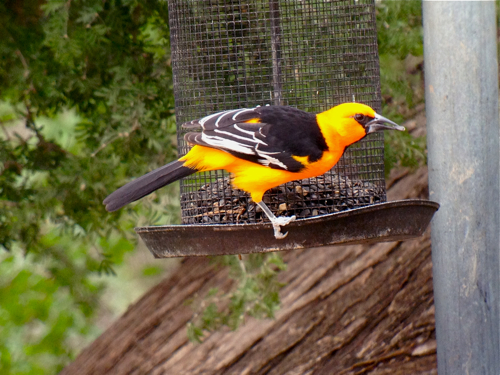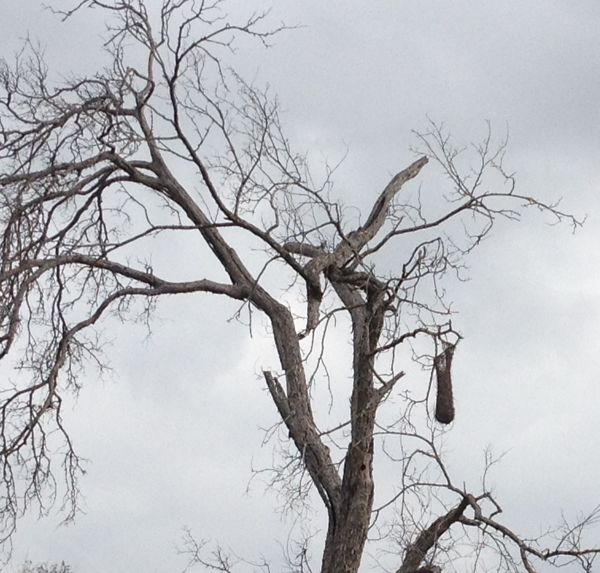South Texas, as always was SO much fun. Even if you choose to do some casual birding you can still hit all the specialties. I took a mini break down there over the weekend to hang with a girlfriend and since we had both been there, each day we slept in and let our bodies wake us rather than our alarm clocks and enjoyed the local Mexican restaurants and headed to our favorite parks.

I always have a soft spot for Bentsen Rio Grande State Park. It's the first south Texas park I ever visited in the Rio Grande Valley and where I got most of my Texas specialties like the above green jay (you can get them at most of the parks, but like actors who portray The Doctor, you never forget your first). Sitting in the balmy 60 - 70 degree weather with my scope and bins really made the tension melt from my bones.

Though walking and biking are fantastic ways to enjoy this Texas park, the bird feeders really deliver. The birds went crazy for this log filled with peanut butter. There was even a clay-colored thrush (or clay-colored robin as some field guides call it). These sometimes zip over the border from Mexico but I haven't seen one since Panama. Not that I really note that, but I guess I got a new bird for my US list without even trying.
I really clicked with using my iPhone 4s for digiscoping rather than my Nikon D40. I'm hopeful that by the time spring arrives, I will no longer go out with that camera and only go out with my iPhone...we'll see. Hand holding has been okay but not as nice as having an adapter. But since I was having such luck in Texas, I tried taking video at the feeders...I was hand holding but it turned out okay. Ignore what the people are saying during the oriole part. They were sitting next to us and talking about a different bird than what you see in the video.
http://youtu.be/A1j4Rvcz0pE
I loved those great kiskadees. They were "peanut butter catching" at the feeder like they would for aerial insects. As a matter of fact, because the kiskadees were so fast, they people next to us thought they were grabbing flies attracted to the feeder. But check out these stills I grabbed from the video:

That's a beakful of peanut butter!

Even the plain chachalacas got in on the peanut butter action...I don't think I saw a single woodpecker come to that feeder.

Besides all of these there were warblers checking it out as well (warblers in January, what a gift to this Minnesota girl). We didn't see them, but many reported that bobcats come to hunt around the feeders too...needless to say, we didn't see squirrels.
Thank you, Bentsen State Park, for a lovely afternoon.
 Orioles are not birds that one typically associate with being seed eaters but this Altimira oriole at Bentsen Rio Grande State Park certainly seemed to dig them. Most of us think of orioles as nectar, fruit and jelly feeder birds but I've seen them sample seed and suet when Baltimore orioles arrive up in Minnesota and Wisconsin in early spring during a cold snap. This bird had ample access to a suet log (at least until a chachalaca took over the feeder).
Orioles are not birds that one typically associate with being seed eaters but this Altimira oriole at Bentsen Rio Grande State Park certainly seemed to dig them. Most of us think of orioles as nectar, fruit and jelly feeder birds but I've seen them sample seed and suet when Baltimore orioles arrive up in Minnesota and Wisconsin in early spring during a cold snap. This bird had ample access to a suet log (at least until a chachalaca took over the feeder).





